Miter Saw vs. Circular Saw: Choosing the Right Saw for Your Project
- December 11, 2023
- 0 comment
In the realm of woodworking and construction, selecting the appropriate saw can significantly influence the outcome of your project. Two popular contenders who often find themselves at the forefront of this decision-making process are the Miter Saw and the Circular Saw. Each of these power tools brings its unique set of features and advantages to the table, catering to diverse cutting needs.
Whether you’re a seasoned carpenter or a DIY enthusiast embarking on a home improvement venture, understanding the distinctions between the Miter Saw and Circular Saw is crucial for making informed decisions. Throughout this discussion, we’ll delve into the characteristics of both saws, exploring their strengths and applications to help you navigate the choice and ensure that your next cutting endeavor is a precision-crafted success.
What You Need To Know About Miter Saw

A Miter Saw, also known as a chop saw, is a versatile power tool designed for making precise angled crosscuts in wood, metal, or other materials. This saw features a circular blade mounted on a hinged arm that can be adjusted to various angles, allowing users to make accurate miter cuts, bevel cuts, or a combination of both. Miter Saws are particularly favored for tasks such as framing, molding, and trim work, where angled cuts and precision are paramount. The saw typically has a miter scale that enables users to set the desired angle, and some models come with additional features like laser guides or digital displays to enhance accuracy. Miter Saws are available in different types, including compound miter saws that can tilt in two directions (left and right) for bevel cuts, and sliding compound miter saws that have a sliding function to accommodate wider workpieces. These saws are valued for their efficiency and ability to make intricate cuts, making them an essential tool for carpenters, woodworkers, and DIY enthusiasts alike.
Understanding Miter Saws
A miter saw features a stationary base with a hinged saw that moves vertically. The round blade is ideal for crosscuts and miter cuts, with the material aligned against a fence for stability. Miter saws can be categorized into standard, compound, and sliding compound types, each offering varying degrees of flexibility and cutting capabilities.
Types of Miter Saw
1. Basic Miter Saw
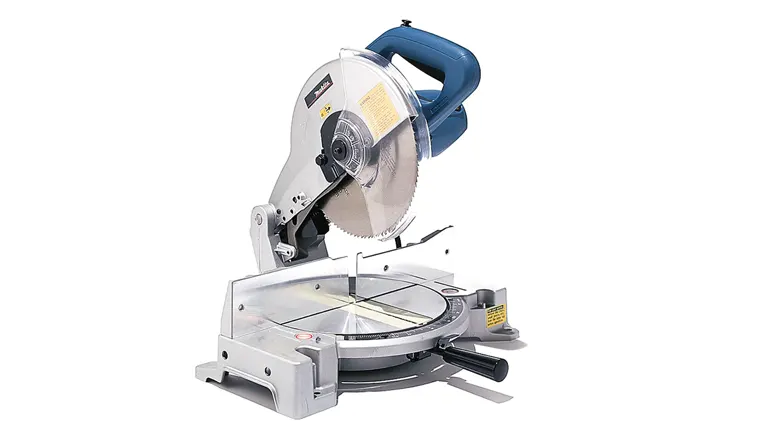
Described as the standard variant, the miter saw is characterized by a base or table that pivots to both the right and left. This pivotal motion enables users to adjust the angle of crosscuts. The cutting action involves a vertical movement of the blade, either lifting up or coming down, allowing it to make precise cuts through materials placed on the base.
2. Compound Miter Saw
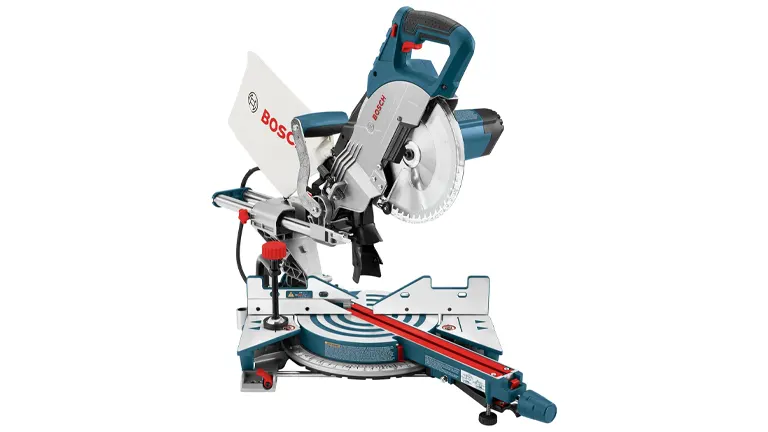
The compound miter saw goes beyond the capabilities of the standard version. In addition to the pivoting base for changing crosscut angles, it possesses the ability to tilt. This tilting feature facilitates the execution of bevel and compound cuts through materials, enhancing the saw’s versatility for various cutting requirements.
3. Dual Compound Miter Saw
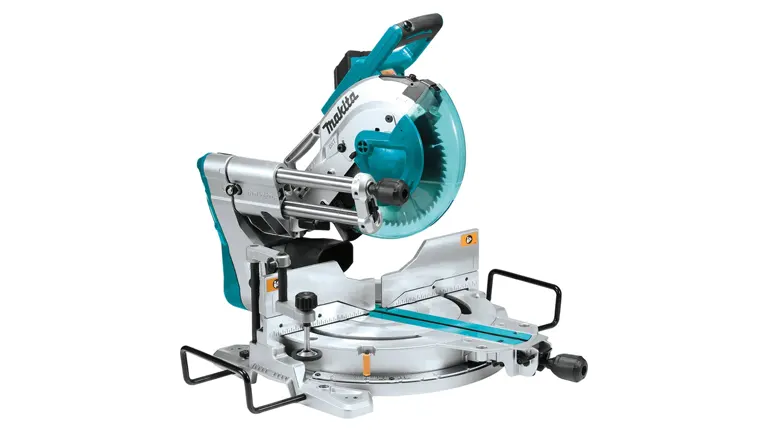
Similar to compound miter saws, dual compound miter saws possess the capacity to tilt in two directions, offering versatility for bevel cuts. This dual tilting feature allows adjustments both left and right, providing users with increased flexibility when crafting various angles. The convenience of not having to reposition the workpiece simplifies complex cutting tasks, saving time and effort during precision projects. Ideal for applications such as crown molding installations, where intricate joinery demands meticulous attention, dual compound miter saws ensure seamless and accurate bevels for a wide range of woodworking tasks.
4. Sliding Compound Miter Saw

Sliding compound miter saws feature a distinctive sliding arm or rails, allowing the blade to move forward and backward. This sliding action significantly increases the saw’s capacity to cut wider boards or materials. The extension provided by the sliding arm enhances the tool’s versatility, making it particularly effective for tasks that involve larger workpieces. This design innovation ensures smooth and precise cuts across a broader range of materials, adding efficiency and flexibility to woodworking and construction projects.
5. Cordless Miter Saw
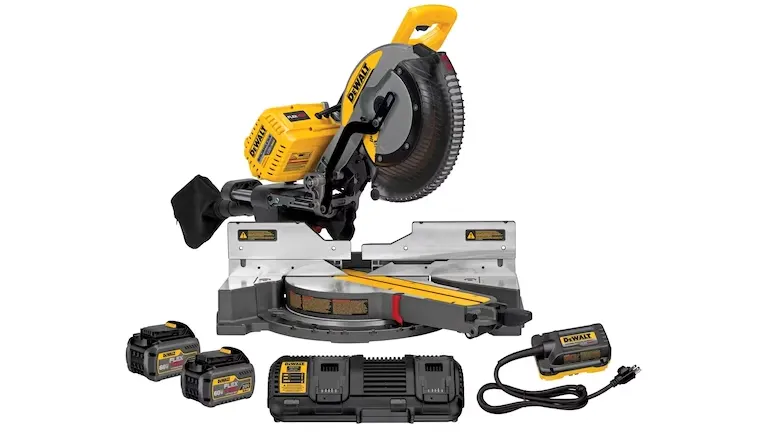
Advancing with technology, cordless miter saws, powered by rechargeable batteries, have gained popularity in woodworking and construction circles. This innovative design delivers heightened mobility and flexibility, particularly in job site environments where power outlets may be scarce. The absence of cords not only facilitates unrestricted movement but also contributes to a safer work environment by eliminating trip hazards. Utilizing cutting-edge lithium-ion battery technology, these saws offer varying runtimes based on usage intensity and battery capacity. While the cordless design enhances convenience, users should consider factors such as battery life and weight for optimal performance in diverse project scenarios.
What You Need To Know About Circular Saw

The Circular Saw stands as a cornerstone in the toolkit of carpenters, builders, and DIY enthusiasts alike, renowned for its adaptability and efficiency in making straight cuts through a variety of materials. This power tool features a round, flat blade with sharp teeth, driven by an electric motor. Unlike a miter saw, a circular saw is incredibly versatile, capable of handling tasks ranging from crosscuts and rip cuts to bevel cuts. The blade depth can be adjusted to accommodate different material thicknesses, and the tool is adept at cutting through wood, metal, plastic, and more. Its handheld design allows for mobility, making it an ideal choice for on-site work. Circular saws come in corded and cordless variations, with the latter providing enhanced portability. With a range of blade types available, including those designed for specific materials or specialized cuts, the circular saw remains a indispensable tool for a broad spectrum of construction and woodworking projects.
Understanding Circular Saws
In contrast, a circular saw is a handheld tool relying on the user’s precision. While both tools share a circular blade, a circular saw lacks the fixed base of a miter saw. It requires the user to guide and direct the saw through the material for straight, angled, or curved cuts. Circular saws come in types such as sidewinder, worm drive, compact, and track saws, each tailored to specific applications.
Types of Circular Saw
1. Sidewinder Circular Saw
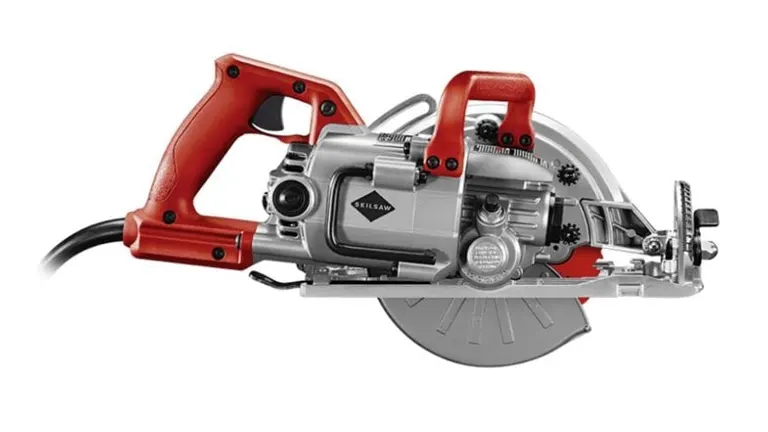
Also known as in-line saws, sidewinder circular saws represent the most prevalent type in the category. Featuring a motor positioned directly to the left of the blade, these saws efficiently turn the shaft to drive the blade at high speeds. Their hallmark characteristics include a compact and lightweight design.
2. Worm Drive Circular Saw
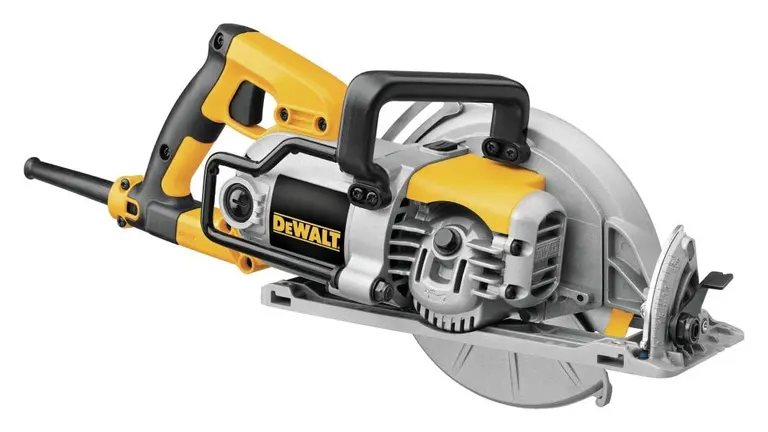
Serving as a distinctive alternative to sidewinder circular saws, worm drive circular saws boast a design with the motor situated behind the blade. While this configuration results in slightly reduced speed, it significantly enhances torque, making these saws well-suited for extended crosscuts and miter cuts.
3. Compact Circular Saw
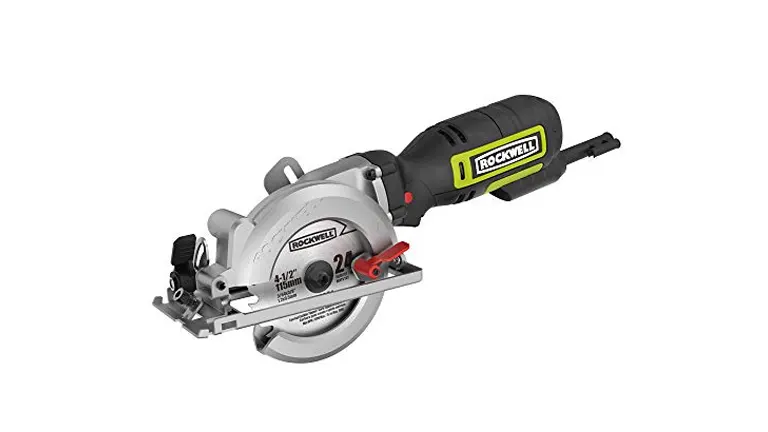
Often referred to as mini circular saws due to their diminutive size, compact circular saws prove effective for tasks in confined spaces, such as within walls. To achieve their small form factor, these tools sacrifice overall power by downsizing both the motor and its output. Additionally, the blade on a compact circular saw is considerably smaller compared to standard sidewinder or worm drive saws.
4. Track Saw
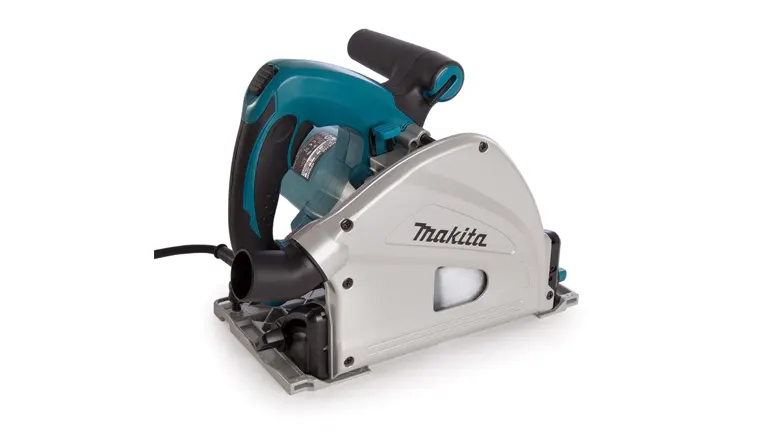
Although similar to circular saws, track saws diverge in terms of classification due to their distinct operational characteristics. Track saws lack the same flexibility as circular saws but excel in precision and straight cuts by working in conjunction with tracks. Essentially, track saws are circular saws optimized for accuracy through track-guided operation.
Comparative Analysis
Circular saws are highly effective at cutting sheet goods and offer great flexibility in how users can direct them. This handheld tool stands out for its ability to cut through various materials, including wood, plastic, and metal. The circular saw’s adaptability and ease of use make it suitable for a wide range of cutting tasks, making it a valuable tool in both workshops and job sites.
In contrast, miter saws prioritize precision over the flexibility of user-directed movement. While they may not be as versatile as circular saws in terms of movement, miter saws are known for their accuracy, especially when it comes to making identical cuts. This precision is crucial in projects that require exactness, such as building decks or fences, where consistency is essential for both aesthetics and structural integrity. The miter saw’s consistent ability to reproduce cuts proves to be valuable in situations where precision is a top priority, providing woodworkers and builders with confidence in achieving consistently high-quality results.
Comparison Table
| Feature | DeWalt DCS573B Circular Saw | BOSCH GCM12SD Miter Saw |
|---|---|---|
| Power Source | 20V MAX Battery | Corded Electric |
| Blade Diameter | 7-1/4 inches | 12 inches |
| Motor | Brushless | 15 Amp |
| No-load Speed | 5,500 RPM | 4,000 RPM |
| Max Depth of Cut at 90° | 2-9/16 inches | 3-1/2 inches (4×14 Dimensional Lumber) |
| Max Depth of Cut at 45° | 2 inches (Circular Saw) | 2 inches (2×14 Dimensional Lumber) |
| Bevel Capacity | 0-57° | 47° left and 47° right |
| Cutting Capacity – 90 Degree | 2-9/16 inches | 14 inch |
| Dust Collection | Optional dust port | 90% dust collection |
| Weight | 8.2 pounds | 79 pounds |
| Dimensions (inches) | 15.25″L x 9.75″W x 8.25″H | 32.38L x 26.5W x 27H |
| Average Price | $168.95 to $190.50 | $582.97 to $622.99 |
DeWalt DCS573B 7-1/4 in. Brushless Cordless Circular Saw
The DeWalt DCS573B 7-1/4 in. Brushless Cordless Circular Saw is a powerful and versatile cutting tool designed for optimal performance. Powered by a 20V MAX battery, this circular saw features a brushless motor, ensuring efficient and extended operation. With a no-load speed of 5,500 RPM, it delivers swift and precise cuts, making it suitable for various applications. The saw offers a maximum depth of cut of 2-9/16 inches at 90 degrees, providing ample capacity for a range of cutting tasks. Weighing in at 8.2 pounds and equipped with an ergonomic design, it’s a lightweight and maneuverable tool, ideal for users prioritizing mobility and flexibility. The DeWalt DCS573B is an excellent choice for those seeking a reliable circular saw with the convenience of cordless operation.
BOSCH GCM12SD 12″ Corded Dual-Bevel Sliding Glide Miter Saw
The BOSCH GCM12SD 12″ Corded Dual-Bevel Sliding Glide Miter Saw is a premium cutting solution designed for accuracy and versatility. Featuring the Bosch-exclusive Axial-Glide system, this miter saw provides wider cross-cuts, enhanced alignment, and a smooth glide for a longer tool life. With a 15 Amp motor, it achieves no-load speeds of 4,000 RPM, ensuring quick and precise cuts in various materials. The saw boasts a clear lower guard for unobstructed cut-line visibility, along with pre-aligned SquareLock fences for maintaining precision throughout its lifespan. Equipped with an adjustable miter detent system and upfront bevel controls, this miter saw allows easy adjustments and provides detents at common angles for added convenience. The GCM12SD is known for its space-saving design and ergonomic features, making it an excellent choice for users who prioritize accuracy and efficiency in their woodworking projects.
Analysis
In the comparison between the DeWalt DCS573B and the BOSCH GCM12SD, the choice ultimately comes down to the nature of your projects, your workspace, and your budget. The DeWalt circular saw, powered by a 20V MAX battery, excels in portability and flexibility, making it an excellent choice for projects that require mobility and varied material cutting. Its brushless motor and 5,500 RPM no-load speed provide efficient cutting for a range of tasks. On the other hand, the BOSCH GCM12SD, a corded dual-bevel sliding glide miter saw, offers a powerful 15 Amp motor, extensive cutting capacity, and precise performance. The Axial-Glide system enhances its cross-cutting abilities, and the 90% dust collection feature ensures a cleaner workspace.
Given the details provided in the comparison between Miter Saw and Circular Saw, if your woodworking projects demand accuracy and involve substantial cutting tasks, the BOSCH GCM12SD could prove preferable with its advanced attributes and expanded cutting capabilities. On the other hand, if your focus lies on portability, cutting various materials, and adhering to a more budget-conscious approach, the DeWalt DCS573B circular saw stands out as an excellent alternative. Deliberate consideration of your project needs, workspace limitations, and financial constraints will guide you in making a well-informed decision tailored to your specific requirements.
Space Considerations
Miter saws, particularly the sliding compound variants, require more workshop space, rendering them well-suited for adequately equipped workshops, garages, or sheds. Their larger size and extended design make them ideal for settings where ample space is available to accommodate the tool’s footprint and facilitate its operation. On the other hand, circular saws, with their portable and compact design, offer an advantageous solution for individuals constrained by limited space or those seeking a tool with enhanced versatility.
Circular saws, characterized by their smaller and more maneuverable build, present an attractive option for those working in smaller workshops, shared spaces, or environments where mobility is a priority. Their portability allows users to move freely within confined spaces, making them suitable for tasks that may require a tool to be transported easily from one location to another. This compact nature also makes circular saws a practical choice for DIY enthusiasts working on projects at home, where storage space might be limited, providing a convenient and space-efficient alternative to larger miter saws.
Cost Considerations
Considering the price is crucial when deciding between circular saws and miter saws, and generally, circular saws are more budget-friendly than their miter counterparts. A circular saw can be acquired at a cost ranging from $50 to $200, making it a cost-effective option for those looking to invest in a versatile cutting tool without breaking the bank. On the other hand, miter saws come with a higher price tag, spanning from $100 to $800, depending on the specific features and capabilities incorporated into the tool.
The affordability of circular saws makes them an attractive choice for budget-conscious users or those who prioritize cost-effectiveness in their tool selection. The lower price range allows individuals to acquire a reliable cutting tool without compromising on essential functionalities. In contrast, miter saws, while offering advanced features and precision, may be a more substantial investment, making them suitable for users with specific project requirements and a willingness to invest in enhanced cutting capabilities. Ultimately, the pricing distinction between circular saws and miter saws provides users with the flexibility to align their tool choice with both their budget constraints and the demands of their projects.
Factors To Consider When Choosing Between Miter Saw and Circular Saw
- Project Requirements: Assess the nature of your projects. If you frequently require precise and angled cuts, a miter saw may be more suitable. For more versatile cutting tasks and applications, a circular saw might be the better choice.
- Accuracy Needs: Consider the level of precision your projects demand. Miter saws are known for their accuracy and consistency in making identical cuts, making them ideal for tasks where precision is paramount.
- Flexibility and Maneuverability: Evaluate how much flexibility and maneuverability you need during your work. Circular saws offer more dynamic movement as they are handheld, allowing for greater adaptability in navigating materials.
- Workspace Constraints: Take into account the available workspace. Miter saws, especially sliding compound ones, occupy more space and are suited for well-equipped workshops. Circular saws, being compact and portable, are better for smaller workspaces or job sites with limited room.
- Portability: Consider the need for portability. If you work in different locations or need a tool that can be easily transported, a circular saw’s portability makes it a convenient choice.
- Material Variety: Think about the types of materials you’ll be working with. Circular saws are versatile and can handle a wide range of materials, including wood, plastic, and metal. Miter saws are more specialized for woodworking tasks.
- Budget Constraints: Factor in your budget. Circular saws are generally more budget-friendly, making them a cost-effective option for those with financial constraints. Miter saws, with their advanced features, may come at a higher price.
- Storage Space: Consider the available storage space. Circular saws, with their smaller footprint, are easier to store in compact spaces, making them suitable for home DIYers with limited storage.
- Skill Level: Assess your skill level and comfort with different tools. Circular saws are more user-directed, making them accessible for beginners, while miter saws may require a learning curve for precise adjustments.
- Safety Considerations: Prioritize safety features. Both tools come with inherent risks, so choose a saw with safety features such as blade guards, anti-kickback mechanisms, and ergonomic designs.
By carefully weighing these factors, you can make an informed decision that aligns with the specific demands of your projects and ensures that the chosen saw enhances your efficiency and productivity.
Related Articles and Guides
- Miter Saw Guide: Single VS Dual Bevel
- How to Adjust a Miter Saw for Accurate Cuts
- How To Build A Miter Saw Station
- 7 DIY Miter Saw Station Plans For Your Workshop
- 5 Miter Saw Tips to Make Accurate Cuts
Final Verdict
Choosing between a miter saw and a circular saw comes down to your project needs and personal preferences. If precision and identical cuts are crucial, the miter saw is the ideal choice, excelling in woodworking tasks within a well-equipped workshop. On the other hand, the circular saw, being handheld, is versatile, offering dynamic maneuverability and affordability, making it suitable for those with budget constraints or smaller workspaces. Ultimately, the decision rests on considering your specific project requirements, workspace limitations, and individual preferences.
FAQs
- Can a circular saw match the precision of a miter saw in woodworking projects?
While both saws can handle woodworking tasks, a miter saw, with its specialized design, excels in precision and is better suited for intricate woodwork. - Are there specific safety features to consider when choosing between a miter saw and a circular saw?
Yes, safety is crucial. Look for features like blade guards and anti-kickback mechanisms, and follow recommended safety guidelines for each saw. - Can a miter saw be an alternative to a circular saw for outdoor or mobile projects?
Miter saws, especially sliding compound ones, are less mobile. For outdoor or on-the-go projects, the portability of a circular saw makes it a more practical choice. - Do circular saws have limitations in terms of the materials they can cut compared to miter saws? Circular saws are versatile but may have limitations in precision compared to miter saws. Miter saws are specialized for woodworking but may not handle diverse materials as well.
- How do the costs of accessories and blades compare between miter saws and circular saws?
Consider additional costs for blades and accessories. Circular saw accessories are generally more affordable, whereas specialized miter saw blades may have a higher price point. - Can a circular saw’s portability compromise its cutting accuracy compared to a miter saw?
Circular saws are more versatile and portable, but their accuracy may not match that of a miter saw. Precision tasks benefit from a miter saw’s stability and specialized features. - Which saw is more suitable for DIYers looking to customize cuts for unique projects?
DIY enthusiasts benefit from the versatility of a circular saw for customized cuts. Its handheld nature allows for more dynamic and creative applications compared to a miter saw. - Are there specific workshop setups that complement one saw over the other?
Consider workshop size and setup. Miter saws, with their larger footprint, are ideal for spacious workshops, while circular saws suit smaller workspaces or those with limited storage.
As we wrap up our comparison between the Miter Saw and Circular Saw, the decision between these two tools boils down to your project needs and personal preferences. Whether you prefer the precision of the miter saw or the flexibility of the circular saw, both instruments open the door to creativity and craftsmanship. Consider the specific requirements of your project and the limitations of your workspace as you make this decision. In the world of woodworking, where each cut contributes to the story of your creation, the right saw isn’t just a tool but a valuable partner. As you tackle your next project armed with insights into the strengths of each saw, may your craftsmanship thrive, showcasing the perfect blend of skill and the right tool choice.

Benjamin Brooks
Forestry AuthorGreetings! I'm Benjamin Brooks, and my journey over the past 15 years has revolved around the fascinating realms of content creation, expertise in snow clearing, and the intricate world of lumberjacking and landscaping. What began as a simple curiosity about the natural world and heavy machinery has evolved into a passionate profession where my love for crafting words intertwines seamlessly with my lumberjacking and garden skills.

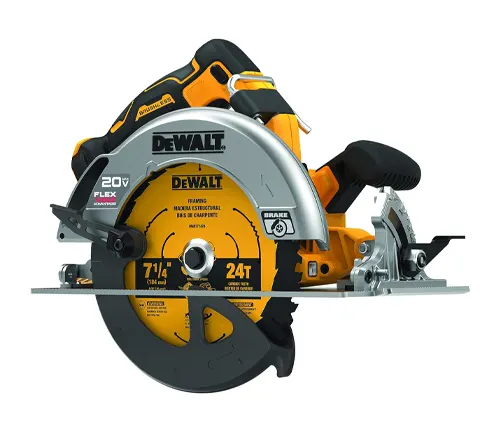
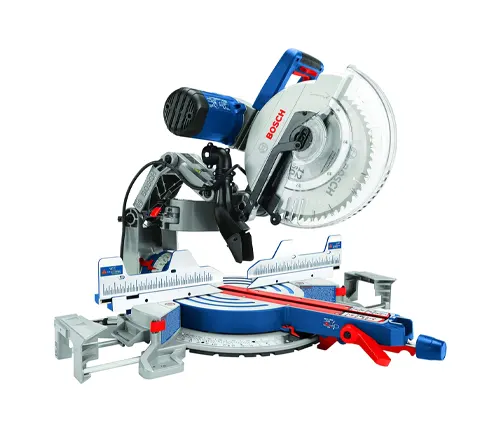












Leave your comment